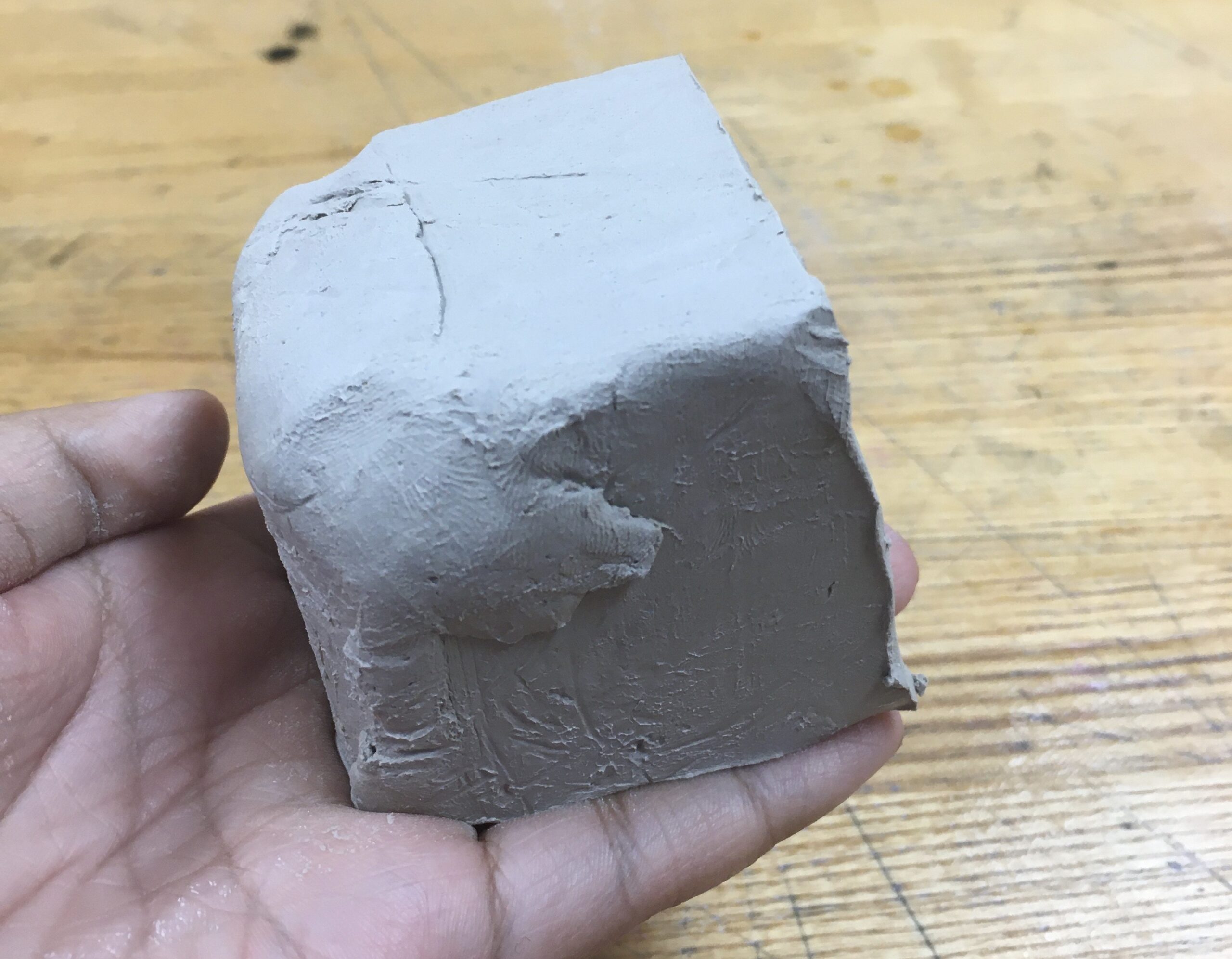
On Sept. 7, Assistant Professor of Art and Design Leslie Colonna held a lecture and participatory Arts and Ideas event titled, “Clay: Learn its History in Art and Science”. In the event, Colonna let students participate by making their own pots out of a ball of clay. The event took place in the Oremus Fine Arts Center in FA104.
At the start of the event, Professor Colonna introduced herself to everyone who showed up and then gave everyone a small block of earth stone clay. After that, she instructed everyone to shape the block of clay into a ball.
“Students listened to a lecture on the history of clay in art, the properties of clay and the process involved in making a pot from start to finish,” said Colonna.
When everyone was done shaping their own block of clay into a ball, Colonna instructed everyone to poke a hole in the center of the clay with their thumb or index finger. Then she told everyone to place their thumb in the hole they created and then while holding the ball of clay in the other hand, pinch the sides of the clay, while rotating it. She called this the pinch pot technique.
“Students learned how to make a simple pinch pot by: forming a small ball of clay, inserting a finger into the center of the ball, slowly spinning the ball of clay on a finger, starting at the bottom of the pot, pinching the walls of the pot carefully and gently, making the walls an even thickness and working their way up the walls of the pot [and] pinching and turning until the pot is an even thickness and the shape they like,” said Colonna.
While everyone worked on shaping their pot, Professor Colonna gave her lecture on the history of clay and the different types of ceramics.
The method used to create a pinch pot in the session was similar to the technique used on the potter’s wheel, which is a very important tool in a traditional ceramics studio.
“The potter’s wheel can speed up production of plates, bowls, cups and anything that is round and can help to make multiple forms that are very similar to each other,” said Colonna. “Once made and dried, the pots that the students made in this event will be fired in the kiln to about 1500 degrees Fahrenheit and after that, the clay will become slightly vitrified in the firing.”
After the clay pieces are fired in the kiln, they have to cool down. Once they’ve been taken out of the kiln, they’re ready to be glazed.
“Students will return, glaze their pot and it will be re-fired to a higher temperature, which will melt the glaze, creating a permanently sealed finished piece,” said Colonna.
In her lecture, she explained the different definitions of the term, “ceramics,” as well as other ways to make pottery, such as using the potter’s wheel and firing the clay objects in a kiln.
“The most important things the students should take from the lecture and activity are the understanding of how traditional ceramics, and now advanced ceramics, play a big role in our lives,” said Colonna. “For students who may want to pursue a career in science, knowing how the field of advanced ceramics is growing is important and could possibly be a resource for when entering their career.”
Colonna hopes that students who attended and participated in this event will see how the different disciplines of art and science are related. Through the event, she wanted to make sure students learned about the history of traditional ceramics and the future of advanced ceramics.
“I hope students enjoy their experience making a pot and practicing the methods demonstrated and that this event will contribute to students becoming lifelong learners and will give them another skill which they use,” said Colonna.
Photo Credit: Katelyn Leano
